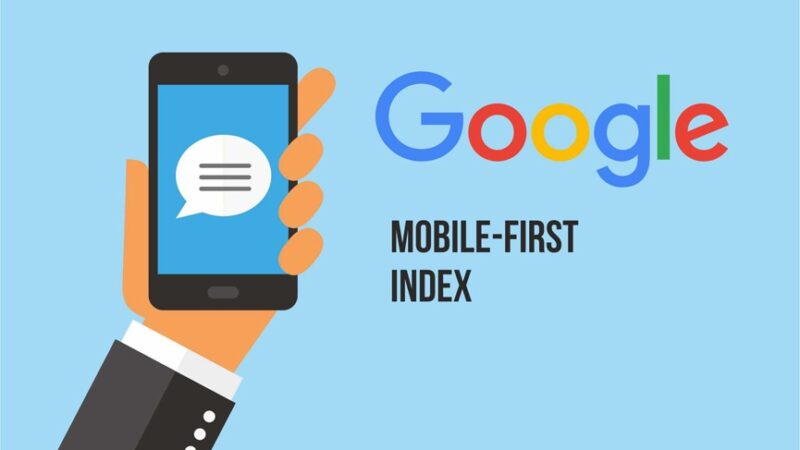Boost Employee Engagement and Learning: Why Small Businesses Should Embrace Gamification Platforms for Training

Are you tired of traditional, mundane training methods that seem to put your employees to sleep? Well, we have a game-changing solution for you! In today’s fast-paced world, small businesses need innovative ways to boost employee engagement and foster continuous learning. That’s why it’s time to embrace the gamification platform for training. By turning education into an exciting game-like experience, these platforms not only captivate your employees’ attention but also supercharge their knowledge retention. Join us as we dive into the captivating realm of gamified training and explore how it can revolutionise your business!
Introduction to Gamification Platforms and its benefits for employee engagement and learning in small businesses
Gamification, the use of game design elements in non-game contexts, has been gaining popularity in recent years as a tool for employee engagement and learning. With the rise of remote work and the increasing need for virtual training tools, gamification platforms have become an effective solution for small businesses looking to boost their employees’ engagement and learning.
So, what exactly are gamification platforms? These are software applications or online platforms that incorporate game mechanics such as points, badges, levels, challenges, leaderboards, and rewards into training programs and activities. The idea behind using gamification is to make learning more interactive, enjoyable, and engaging by leveraging people’s natural desire for competition and achievement.
Benefits of Gamification Platforms for Employee Engagement
Employee engagement is crucial for any business’s success; it refers to how committed employees are towards their work tasks and how motivated they are to contribute positively towards the company’s goals. Here are some ways gamification platforms can improve employee engagement in small businesses:
1. Fosters a Competitive Environment: Gamification creates a competitive atmosphere within the workplace where employees strive to outdo each other while completing training tasks. This healthy competition increases motivation levels among employees as individuals want to perform well not just for themselves but also to prove themselves against their colleagues.
2. Provides Real-time Feedback: Traditional training methods often involve feedback sessions after completing a task or module. However, with gamification platforms, employees receive immediate feedback after completing a task, allowing them to make adjustments and improve their performance in real-time. This immediate feedback helps employees feel more connected to their work and progress.
3. Increases Motivation and Productivity: Gamification adds a fun and challenging element to learning, which can help boost employee motivation and productivity. The use of game mechanics such as points, levels, and rewards creates a sense of accomplishment and progress for employees, encouraging them to continue engaging in the tasks at hand.
Benefits of Gamification Platforms for Employee Learning
Gamification platforms not only improve employee engagement but also have significant benefits for employee learning. Here are some ways gamification can enhance learning in small businesses:
1. Makes Learning Interactive: Traditional training methods often rely on lectures or presentations, which can be monotonous and less engaging for employees. On the other hand, gamification platforms provide an interactive learning experience through game-like activities that involve problem-solving, decision-making, and critical thinking.
2. Increases Knowledge Retention: Gamification involves the use of repetition and reinforcement techniques to help employees retain information better. Through gameplay challenges and quizzes, employees have multiple opportunities to apply what they have learned, increasing knowledge retention rates.
3. Personalised Learning: Gamification platforms allow for personalised learning experiences, where employees can progress at their own pace and receive customised feedback and challenges based on their performance. This individualised approach to learning ensures that employees are engaged and motivated to continue learning.
Gamification platforms offer a wide range of benefits for employee engagement and learning in small businesses. By incorporating game mechanics into training programs, these platforms create an interactive and competitive environment that motivates employees to learn and perform better. Additionally, gamification allows for personalised learning experiences, which can increase knowledge retention rates. Overall, gamification is a valuable tool for small businesses looking to enhance employee engagement and improve training outcomes.
What is Gamification and How Does it Work?
Gamification is the process of incorporating game design elements and mechanics into non-game contexts, such as training and education. It involves using elements like points, badges, leaderboards, and rewards to motivate and engage users in achieving their goals.
The concept of gamification has been gaining momentum in recent years, especially in the corporate world. Many small businesses have started to embrace it as a powerful tool for employee engagement and learning. But what exactly is gamification and how does it work?
At its core, gamification leverages our natural human instincts for competition, achievement, and social interaction to make tasks more enjoyable and motivating. By integrating game-like elements into training programs, employees are encouraged to actively participate in their own learning journey.
But how exactly does gamification work? Let’s take a closer look at the key components that make up this innovative approach:
1. Goal-Setting: In any game, there is always a clear objective that players need to achieve. Similarly, in gamified training programs, employees are given specific goals or objectives they need to accomplish. This not only gives them a sense of direction but also provides them with a purpose for engaging with the content.
2. Progress Tracking: One of the most effective elements of gamification is progress tracking. It allows employees to see how far they have come in their learning journey and motivates them to continue pushing forward towards their goal.
3. Points & Rewards: Points are another crucial aspect of gamification that keeps employees engaged by giving them a sense of accomplishment. As employees complete tasks and reach milestones, they earn points that can be redeemed for rewards or recognition.
4. Badges & Leaderboards: Badges are virtual symbols of achievement that are awarded to employees for completing specific tasks or reaching milestones. They serve as a visual representation of progress and can also be used to showcase skills and achievements to others within the organisation. Leaderboards, on the other hand, create a healthy sense of competition among employees by ranking their progress against their peers.
5. Feedback & Communication: Effective gamification relies on constant feedback and communication between managers and employees. This allows managers to provide guidance and support while also recognizing employee achievements.
Overall, gamification works by tapping into our innate desire for competition, achievement, and recognition. By incorporating game-like elements into training programs, it encourages active participation from employees and drives motivation towards achieving their goals. With its ability to engage and inspire learners, gamification is becoming an increasingly popular approach in the business world for improving employee performance and driving results.
The Impact of Gamification on Employee Engagement and Learning
Gamification has become a popular buzzword in the business world, with many organisations incorporating game-like elements into their training programs and employee engagement initiatives. But what exactly is gamification and how does it impact employee engagement and learning?
Gamification can be defined as the application of game design principles and mechanics to non-game contexts, such as workplace training or tasks. This can include elements like points, rewards, levels, competition, and storytelling.
So how does gamification impact employee engagement and learning? Let’s take a closer look.
1. Increases Motivation and Interest
One of the key benefits of gamification is that it makes learning more fun and engaging for employees. By incorporating game-like elements into training programs, employees are more likely to stay motivated and interested in the material being presented. This is because games have the ability to tap into our natural desire for competition, achievement, recognition, and rewards.
2. Encourages Active Participation
Traditional training methods often involve passive learning through lectures or presentations. However, with gamified training programs, employees are required to actively participate in order to progress through levels or earn rewards. This hands-on approach not only makes learning more enjoyable but also ensures that employees are fully engaged with the material.
3. Provides Real-Time Feedback
Incorporating leaderboards or progress tracking systems into gamified training allows for real-time feedback on performance. Employees can see how they’re doing compared to their peers which can motivate them to improve and strive for better results. This type of instant feedback can also help employees identify areas where they may need additional support or training.
4. Fosters a Sense of Achievement
Humans are hard-wired to seek out challenges and accomplishments. By incorporating game-like elements such as levels, achievements, and rewards into training programs, employees are given a sense of accomplishment when they complete tasks or reach certain milestones. This can be a powerful motivator for continued engagement and learning.
5. Creates a Culture of Continuous Learning
Gamification can also help create a culture of continuous learning within an organisation. By making learning more fun and accessible, employees are more likely to seek out opportunities for growth and development. This can lead to higher levels of employee engagement and a more skilled and knowledgeable workforce.
Gamification can have a significant impact on employee engagement and learning by increasing motivation, providing real-time feedback, fostering a sense of achievement, encouraging active participation, and promoting continuous learning. By incorporating game-like elements into training programs and other business initiatives, organisations can create a more engaged, motivated, and knowledgeable workforce.
How to Choose the Right Gamification Platform for Your Small Business
Choosing the right gamification platform for your small business can be a daunting task, especially with the numerous options available in the market. However, this decision is crucial as it can greatly impact the success of your employee engagement and learning initiatives. Here are some factors to consider when selecting a gamification platform for your small business:
1. Identify Your Objectives: The first step in choosing the right gamification platform is to clearly define your objectives. What do you want to achieve through implementing gamification in your training programs? Is it to increase employee motivation, improve knowledge retention, or enhance collaboration among team members? Once you have identified your goals, you can narrow down your choices and select a platform that aligns with your specific needs.
2. Assess Your Budget: Gamification platforms come at different price points, and as a small business owner, it’s important to consider what you can afford. Look for platforms that offer flexible pricing plans and choose one that fits within your budget without compromising on features and functionalities.
3. User-Friendly Interface: The success of any technology tool depends on its ease of use. A user-friendly interface makes it easier for employees to engage with the platform and navigate through various features effortlessly. Look for platforms that offer simple and intuitive interfaces so that even non-tech-savvy employees feel comfortable using them.
4 Gamification Features: Different platforms offer various gamification elements such as points, badges, levels, leaderboards, etc., which are designed to motivate employees and make learning fun. Consider the features that align with your objectives and choose a platform that offers them. Also, look for platforms that allow you to customise these features to suit your specific requirements.
5. Compatibility and Integration: It’s crucial to choose a gamification platform that seamlessly integrates with your existing systems such as learning management systems (LMS), customer relationship management (CRM) software, or employee performance tracking tools. This will ensure a smooth implementation and reduce any compatibility issues.
6. Mobile-Friendly: With the rise of remote work and employees accessing training programs on their mobile devices, it’s essential to choose a gamification platform that is mobile-friendly. This will enable employees to access the platform from anywhere at any time, increasing engagement and participation.
7. Analytics and Reporting: Data is crucial when it comes to measuring the success of your gamification initiatives. Look for platforms that offer robust analytics and reporting capabilities so you can track employee progress, identify knowledge gaps, and make data-driven decisions for future training programs.
8. Customer Support: As a small business owner, you may not have dedicated IT resources to manage the gamification platform. Hence, it’s important to select a provider who offers excellent customer support in case you face any technical difficulties or need assistance with customization or integration.
Choosing the right gamification platform for your small business requires careful consideration of your objectives, budget, features, compatibility, and support. By keeping these factors in mind and thoroughly researching your options, you can select a platform that meets your specific needs and helps drive employee engagement and learning in your organisation.
Conclusion
In conclusion, gamification platforms offer a unique and effective way for small businesses to boost employee engagement and learning. By incorporating game-like elements into training programs, employers can create an interactive and immersive learning experience that encourages participation and retention of knowledge. This not only benefits the employees but also leads to improved productivity and overall success for the business. As technology continues to advance, it is important for small businesses to stay ahead of the curve by embracing innovative techniques such as gamification in their training methods. So why not give it a try and see how gamification can benefit your small business today?






